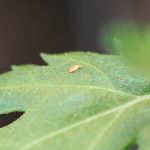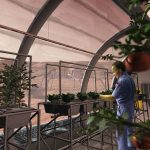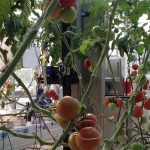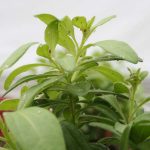
Flemish scientists produce fertiliser from waste flows
Bio-engineers from the universities of Antwerp and Ghent have developed a new type of fertiliser based on bacteria derived from food industry waste flows.

Monitoring system for spider mite damage and yellow sticky traps
Pest monitoring forms the basis of good biological control. Knowledge of the ratio of harmful and beneficial insects is indispensable in determining the necessary

Special packaging material keeps tomatoes fresh for 30 days
Researchers at the Indian Institute of Technology (IIT) in Hyderabad have succeeded in keeping tomatoes fresh for 30 days using special food packaging material.

Researchers make breakthrough in thrips control in chrysanthemum
The predatory bug Orius has been used to control thrips in sweet pepper for many years with great success, but the results have so

Great interest in the opening of the World Horti Center
The World Horti Center, the global centre for research and innovation for the greenhouse horticulture industry in Naaldwijk, was officially opened on 7 March

Wageningen UR identifies ideal horticulture site on Mars
Research scientist Wieger Wamelink and student Line Schug of Wageningen University & Research have been conducting research into finding suitable locations to grow vegetables

Plant growth promoting rhizobacteria in bulb production
The Greenhouse Horticulture and Bulbs, Trees and Fruit business units are launching an Evergreen project to carry out research into bulb production using fewer

Too little insight about factors that effect flowering
We know much more about photosynthesis than about the flowering of the plant. This sometimes leads to surprises, especially with new crops. The grower

Strawberry flavour model ready for use
A good flavour is an opportunity to create added value in strawberries. Flavour is a complex property that involves several factors. The instrumental model

Radiation monitor improves understanding of plant processes
A new online app quantifies the effect of radiated heat loss on crop temperature and energy loss from the greenhouse in a simple, user-friendly

Precision Horticulture Programme focuses on plant level
The Precision Horticulture Programme was launched this year. It is a form of horticulture in which plants receive precisely the treatment they need. In

Energy-saving screens can now be compared objectively
Screen suppliers each have their own methods of determining the energy-saving performance of their screens, making it very hard for the grower to compare

Nutrient deficiency in peppers despite perfect drainage values
When several of the sweet pepper plants at Zwingrow in Honselersdijk (Westland, the Netherlands) were found to be growing more slowly than the rest,

First grower sheds more light on anti-condensation coating
In the past, greenhouse roof light transmittance has always been measured when the roof was dry. But a greenhouse roof spends half the year

What can the horticulture sector learn from the aerospace industry?
How is an astronaut similar to a tomato farmer? They both need to reuse their raw materials, proclaims researcher Angelo Vermeulen in Dutch newspaper

WUR research demonstrates natural genetic variation photosynthesis
Researchers at Wageningen University & Research recently discovered a natural genetic variation for photosynthesis in plants, and have traced this all the way down

Concentrated CO2 gives algae growth spurt
The University of Twente recently developed a new technology to cheaply and efficiently capture CO2 from ambient air. The CO2 thus captured is used by

Above- and below-ground growth response test
The range of plant invigorators and water treatments on offer has increased significantly in recent years. Some look set to deliver growth effects in

Sweet pepper growers can get by with less CO2 in winter
Sweet peppers can manage with 800 ppm CO2 in the winter months. Supplying more than that doesn’t boost photosynthesis: in fact, the sweet pepper

Fungi and bacteria boost resistance to pests and diseases
More and more research is revealing that endophytes – microorganisms that live in the plant without harming it – can significantly boost a plant’s




